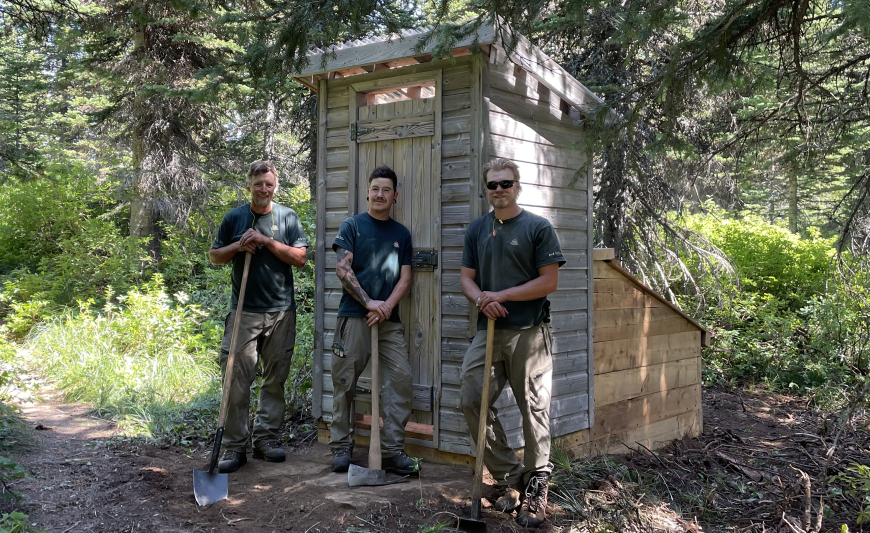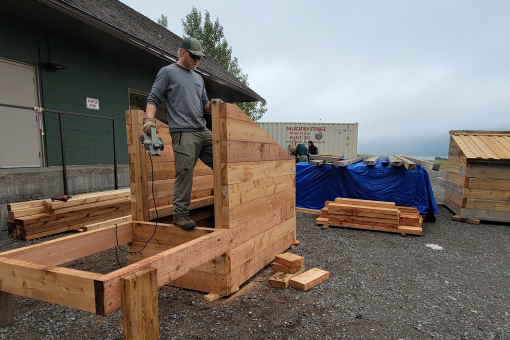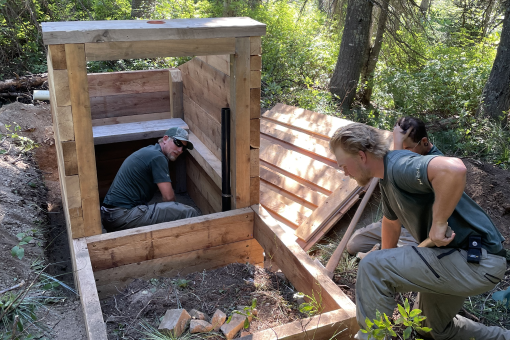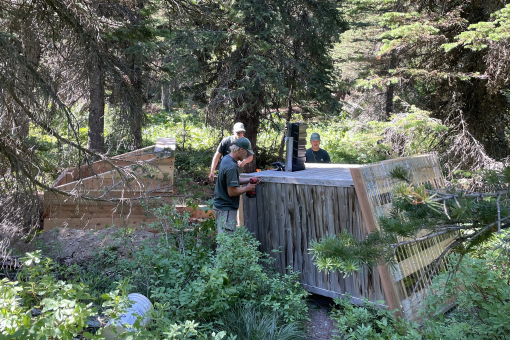Reducing human impact in the backcountry
Waterton Lakes National Park

Parks Canada is committed to protecting ecological integrity within national parks. Rebuilding after the Kenow wildfire presented a unique opportunity to build on initiatives aimed at reducing human impacts in the backcountry.
The wildfire damaged or destroyed backcountry toilets at several popular campsites. Instead of rebuilding the infrastructure as it was, Waterton Lakes’ trail crew have installed new low impact, low-maintenance backcountry toilets.
These urine diverting or vermicomposting “outhouses” use a system that separates urine and solid waste. Urine goes into an underground field where it can be processed naturally and solid waste is transferred to a partially buried vault behind the toilet where it can decompose.
Not only are these new toilets more low-maintenance than traditional backcountry pit outhouses, they also don’t produce nearly as much odour.


The Waterton Lakes Trail Crew builds and maintains the toilets. Since installing the first one at the Boundary Bay campsite crew members have discovered that these facilities require much less seasonal maintenance than old style outhouses. The special toilets are relatively quick and easy to clean and the vault system enables the process of natural decomposition to take place much more effectively than a traditional pit system.
Urine diversion toilets have been installed in areas affected by the Kenow wildfire as well as campsites and hiking areas outside the fire’s path.


As with all backcountry toilets it’s very important that backcountry users don’t throw plastic or other garbage in these toilets. Backcountry visitors must always pack out their trash.
Urine diversion toilets in Waterton Lakes National Park can be found at Boundary Bay, Bertha Lake, Crandell Lake, Goat Lake, Marquis Hole day use area and Alderson Lake. Future installations are planned for more locations around the park.
Related links
- Date modified :